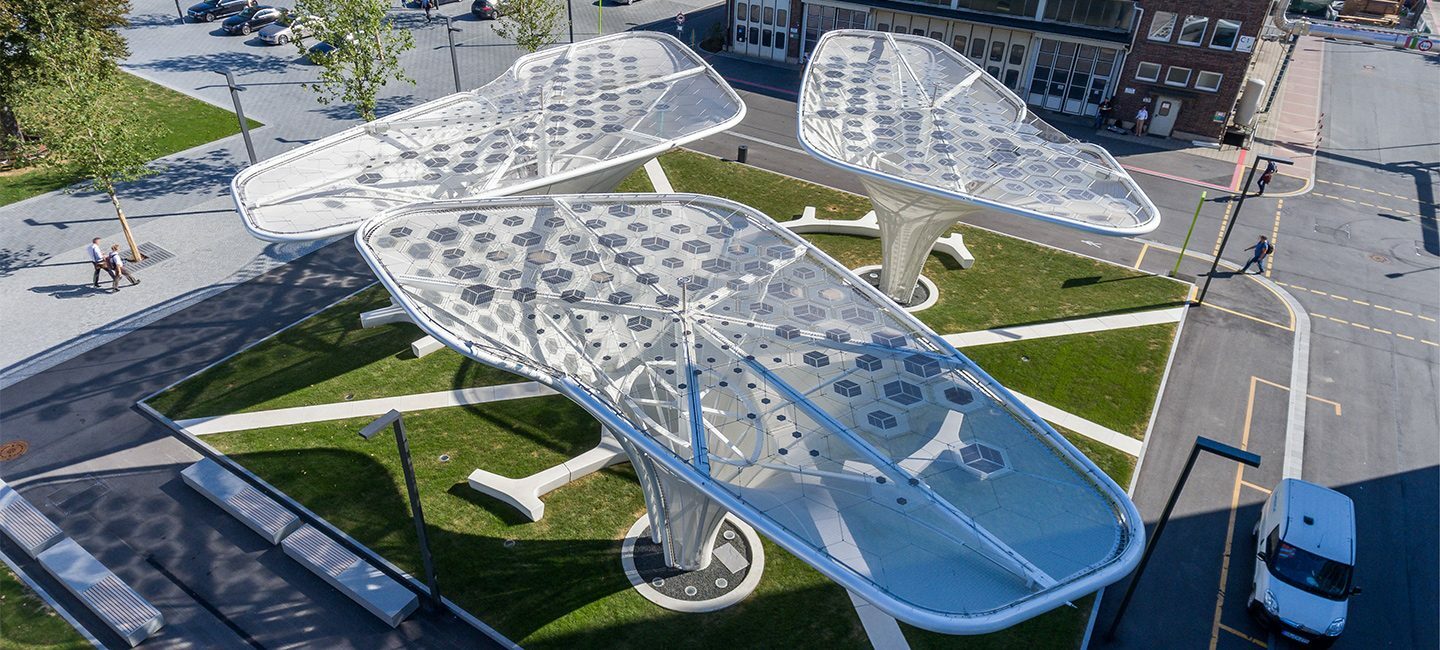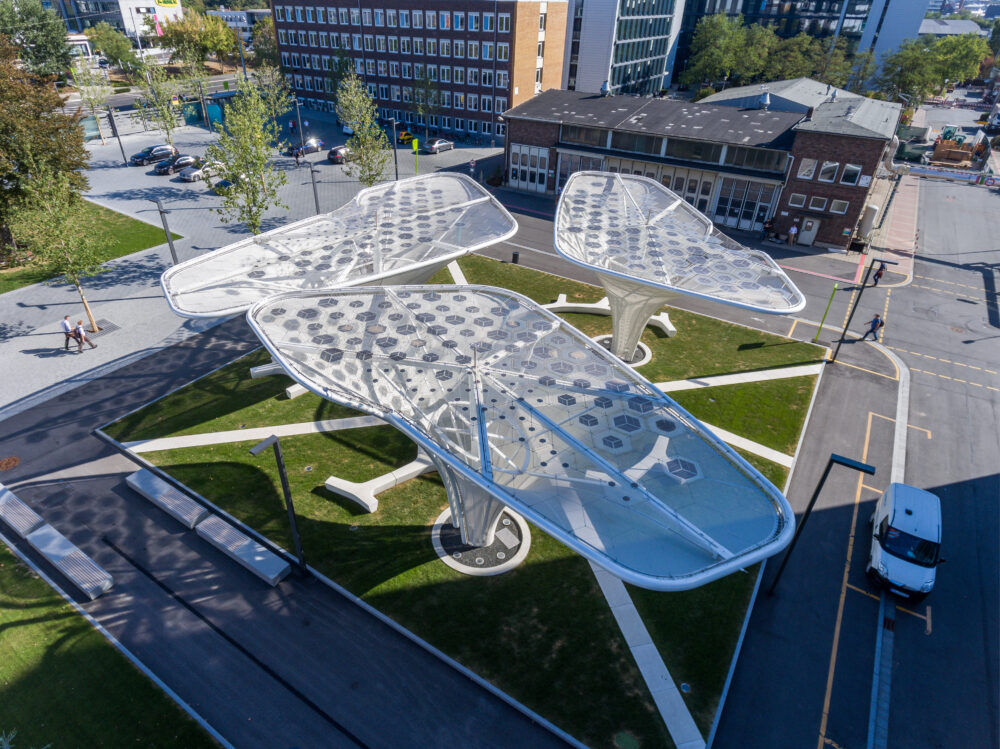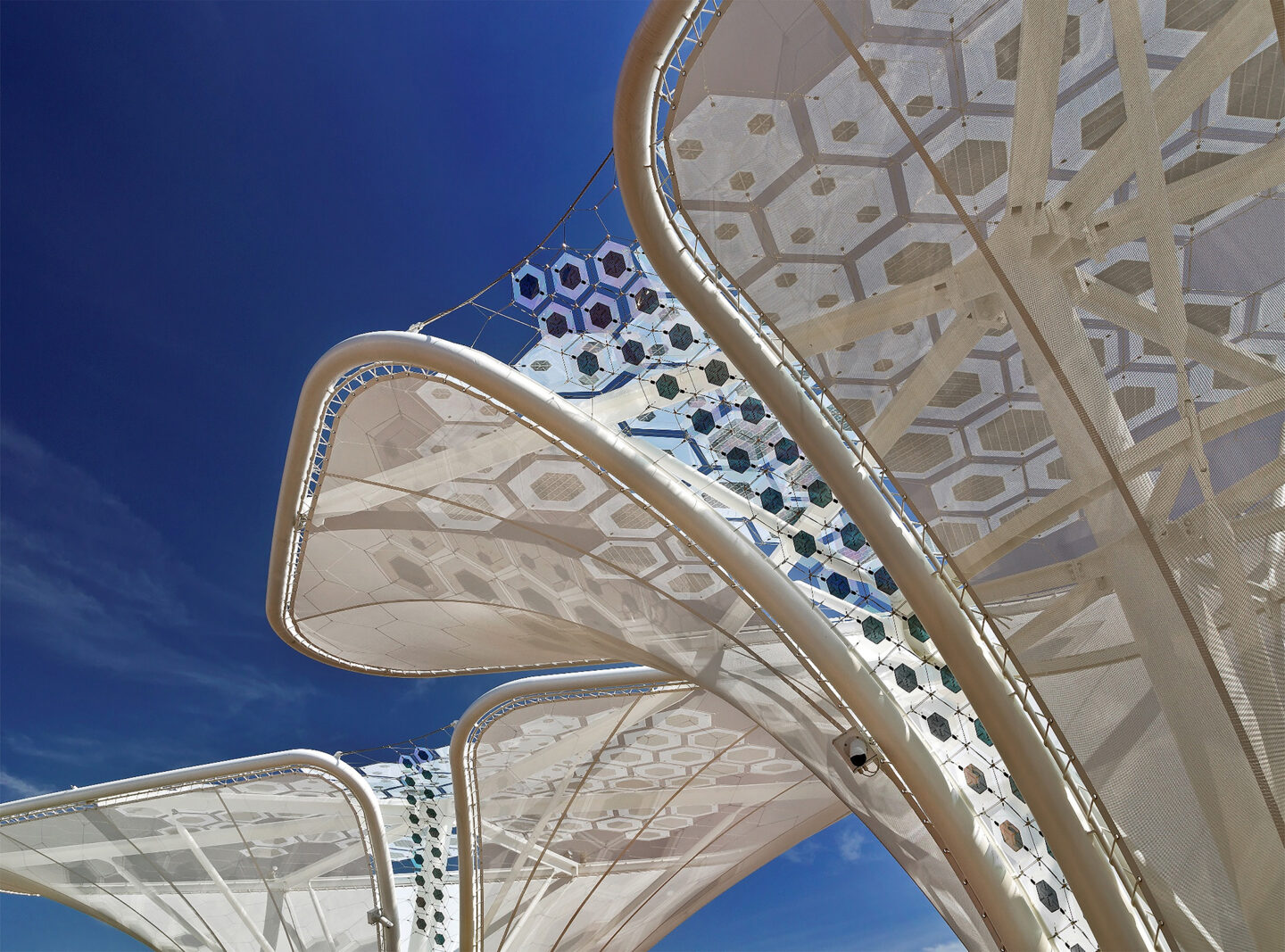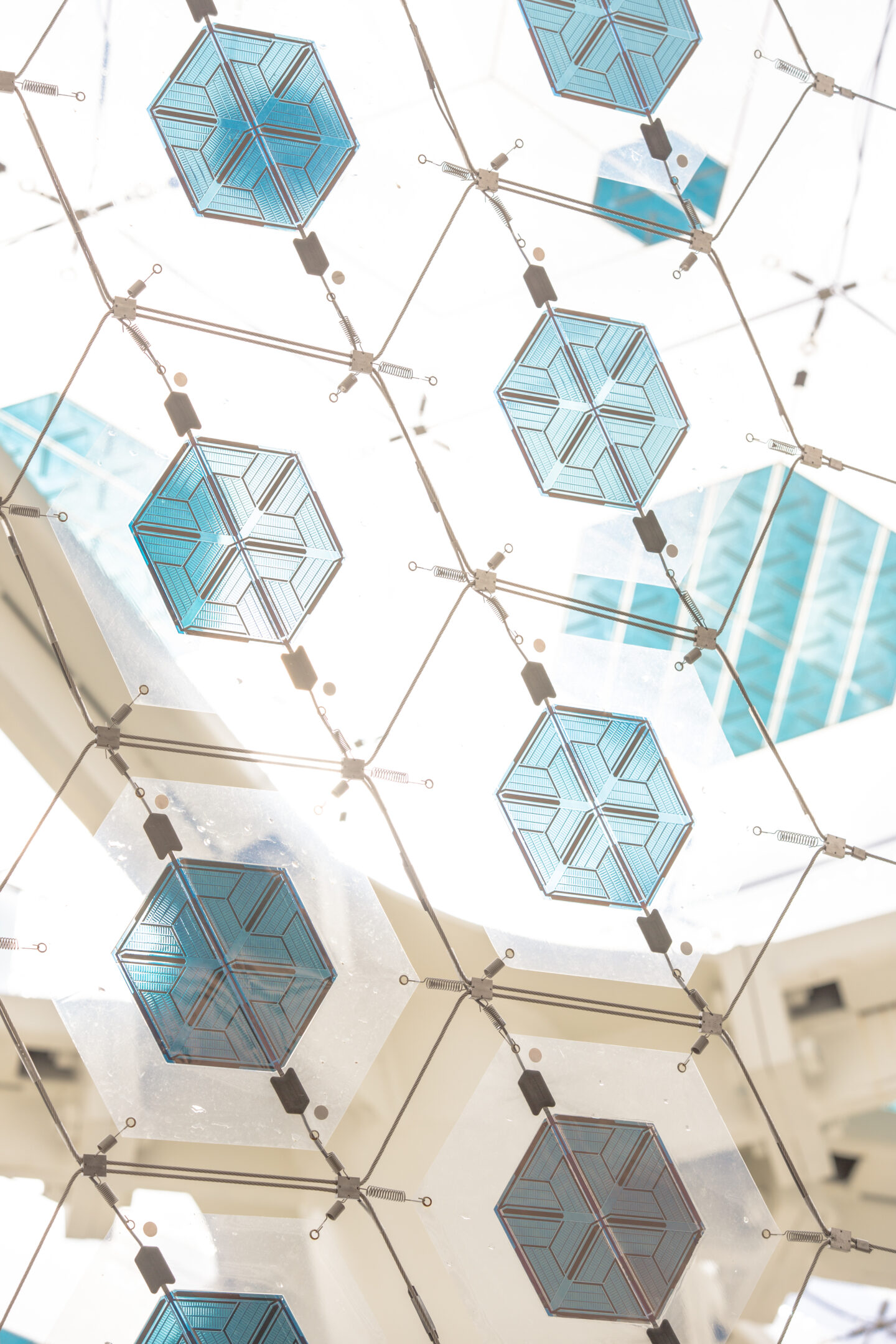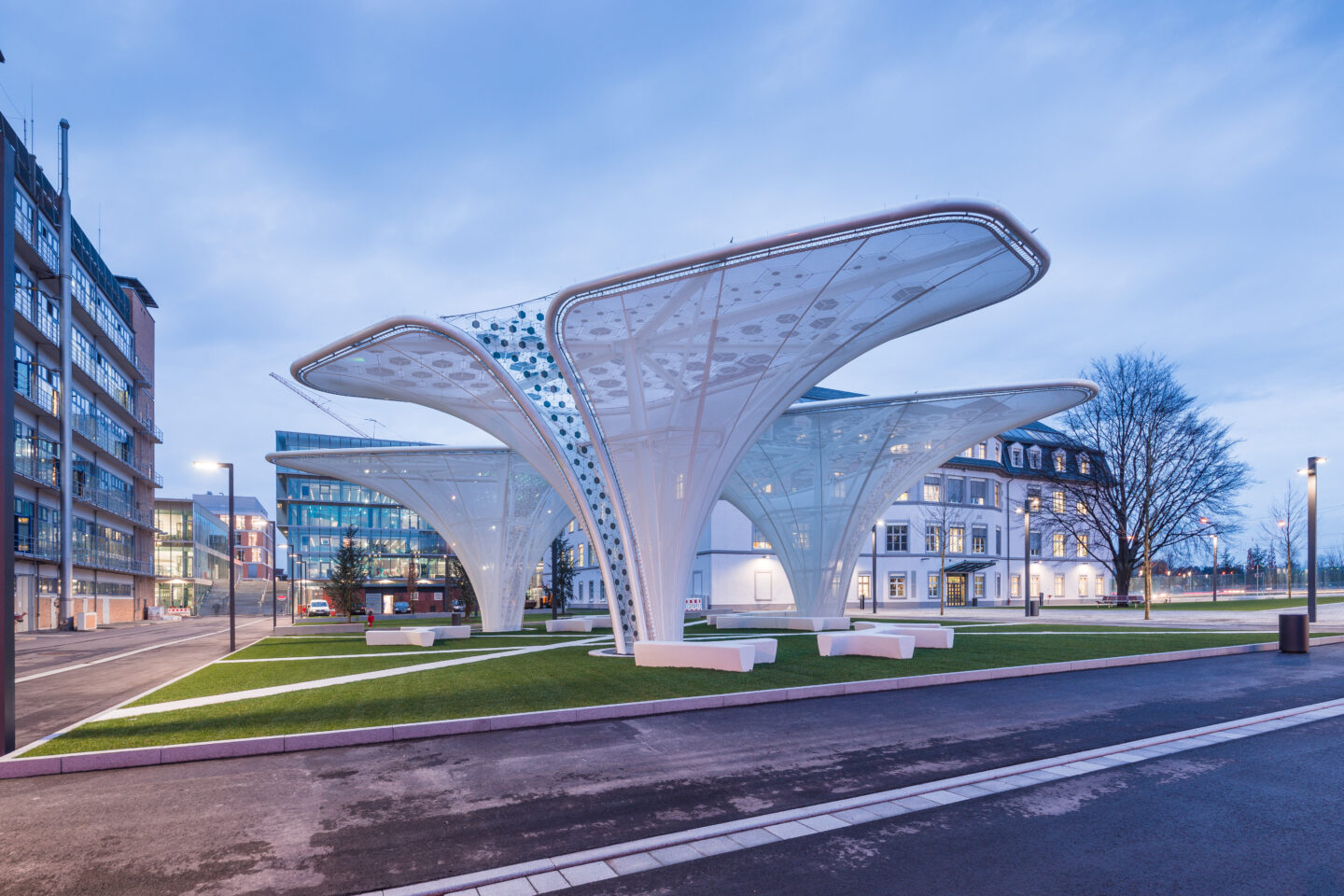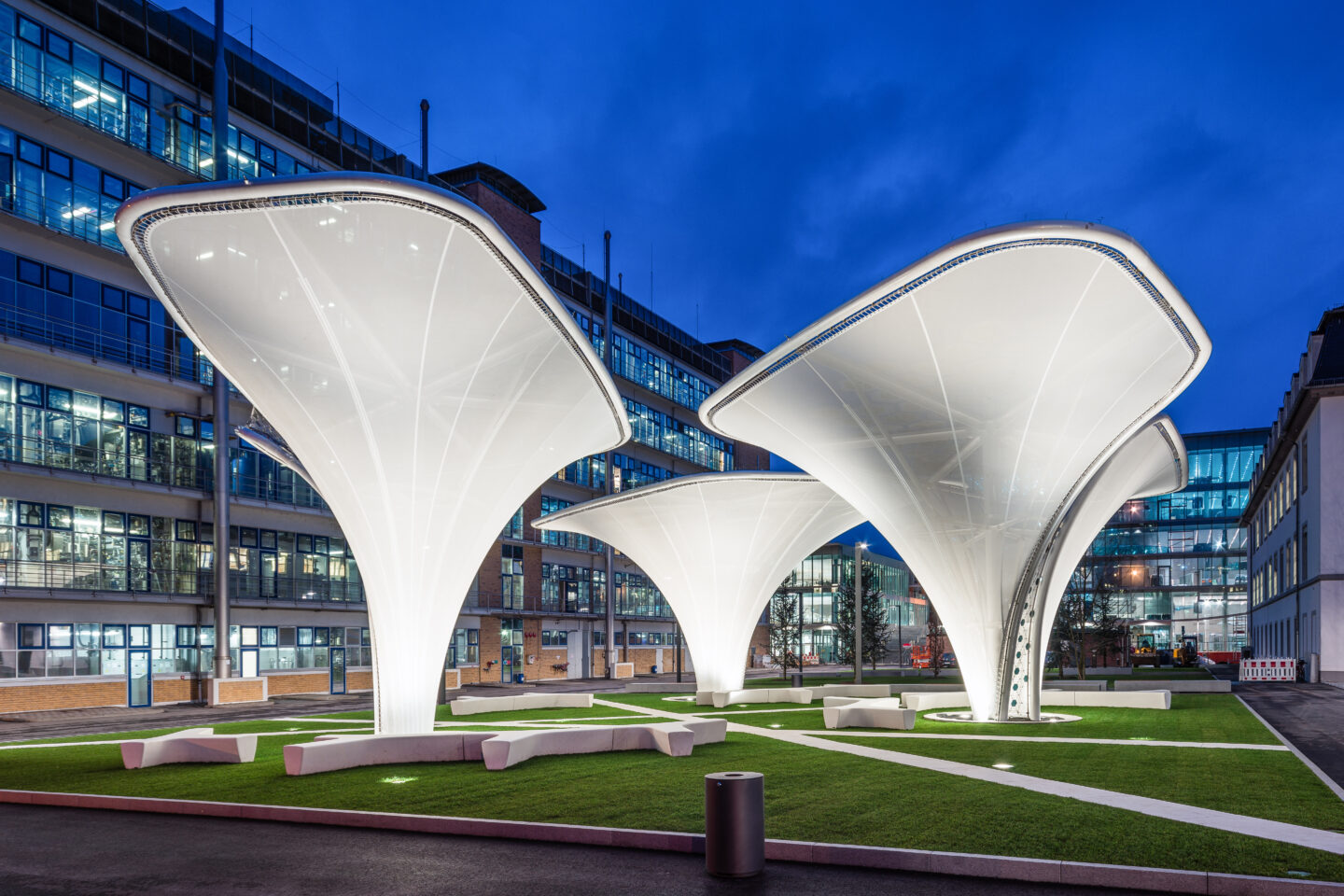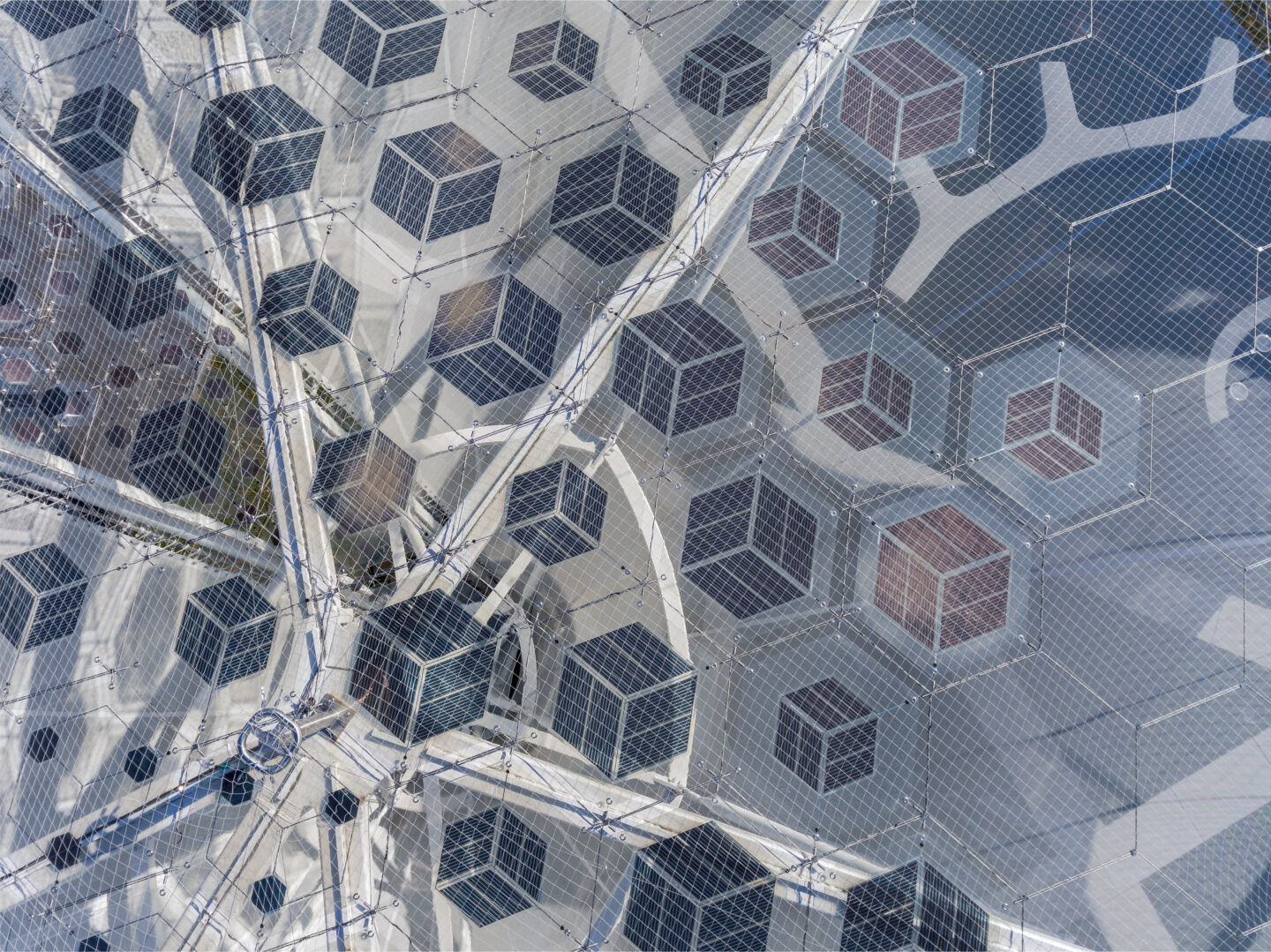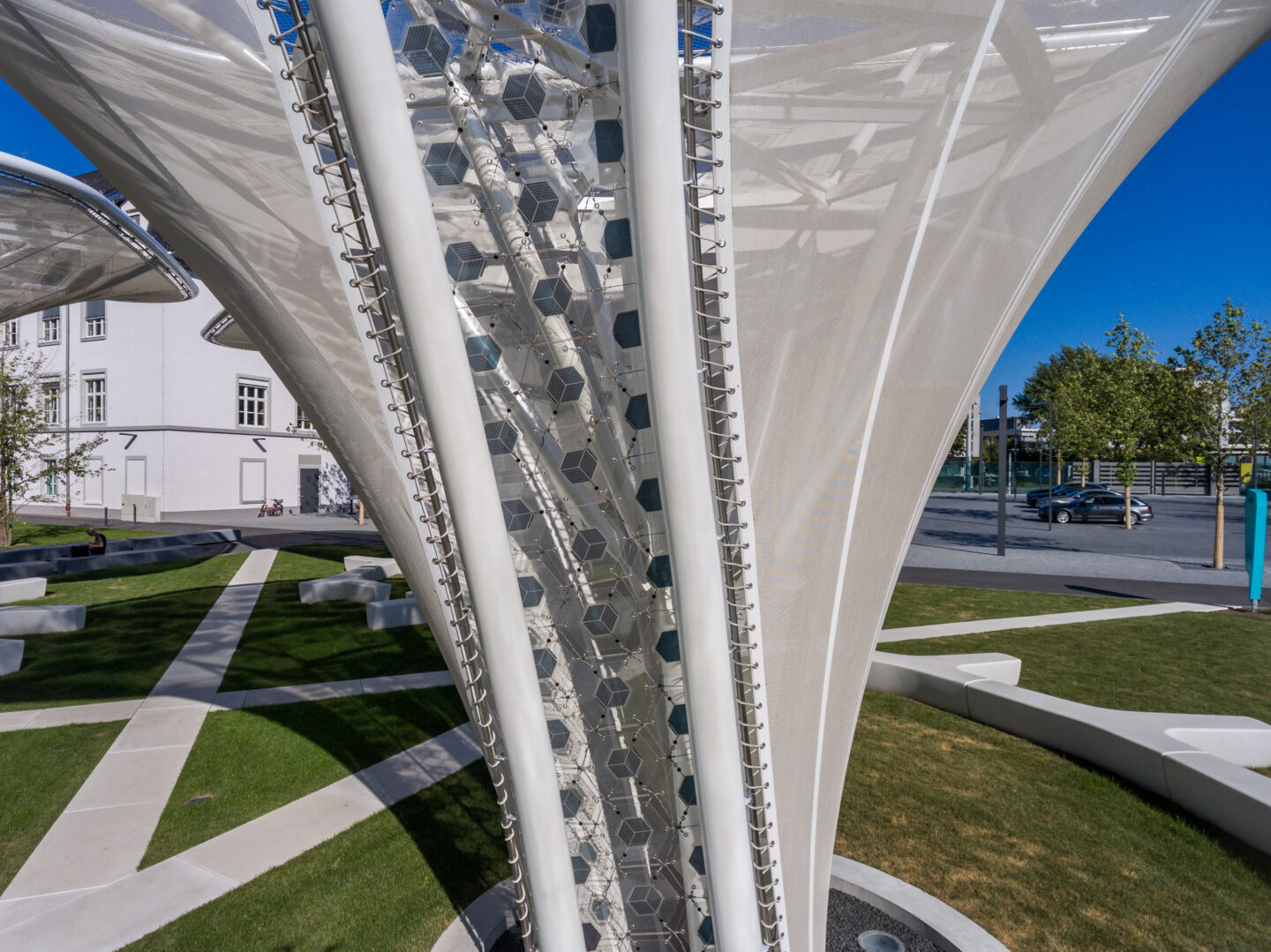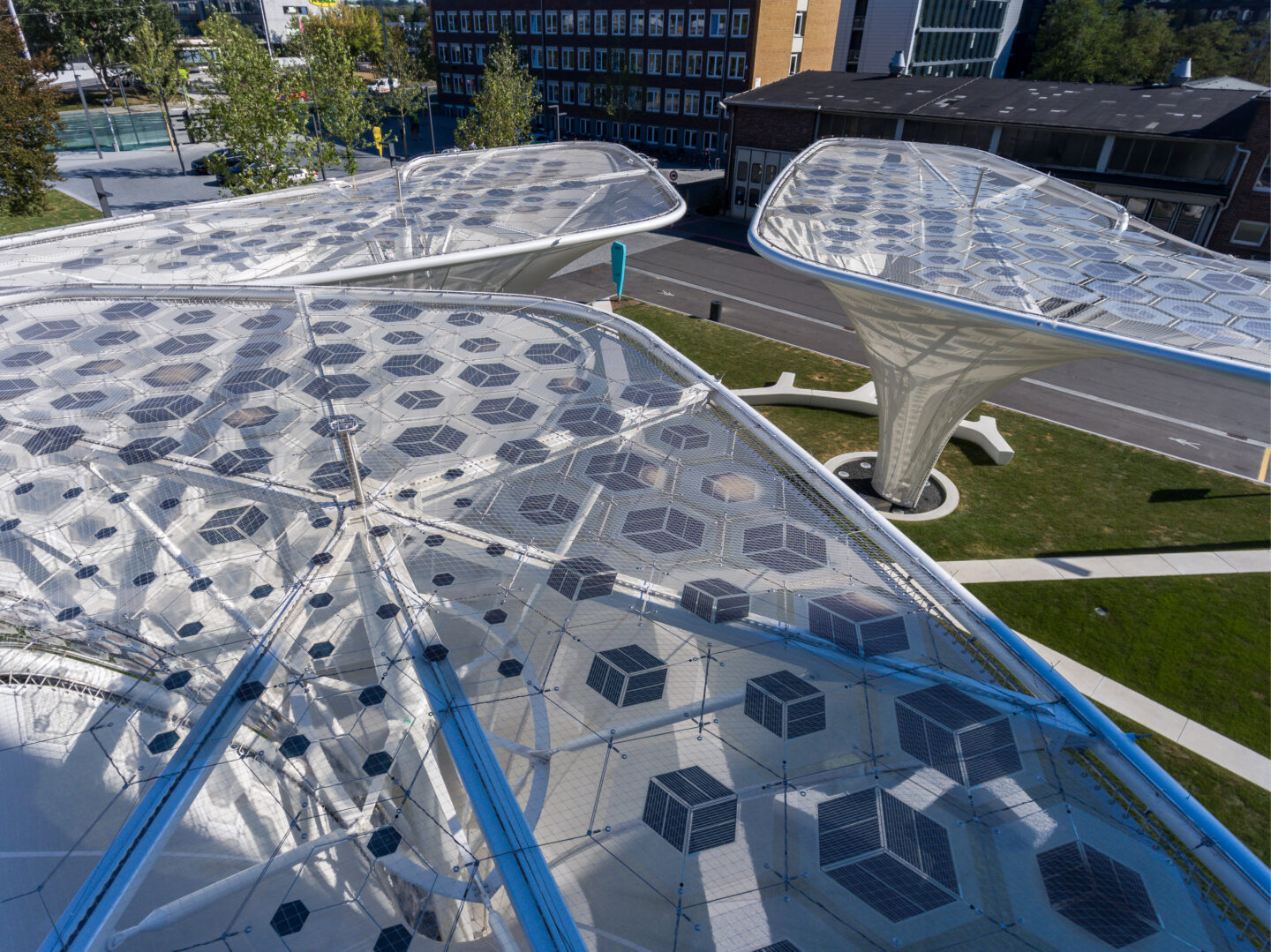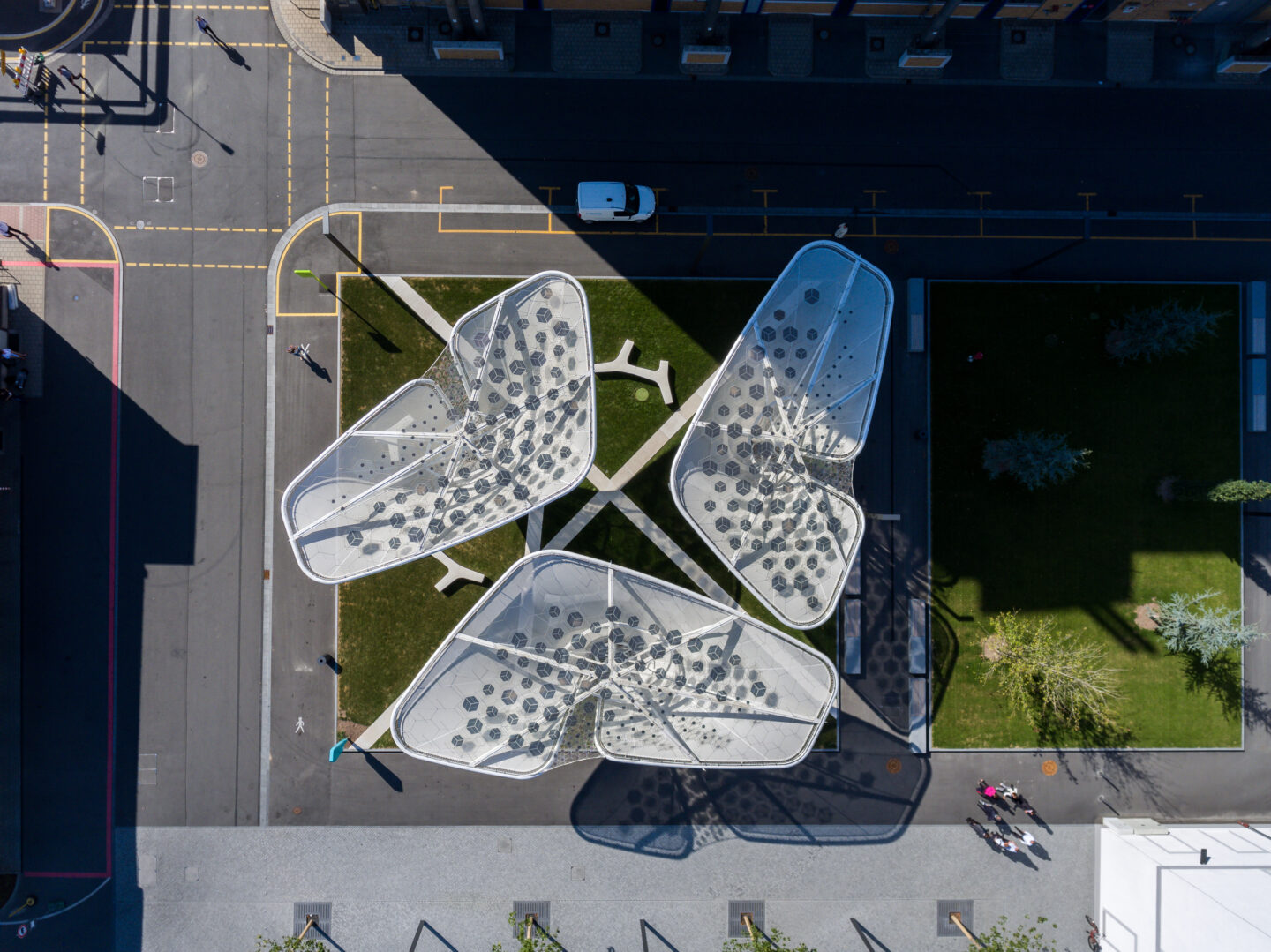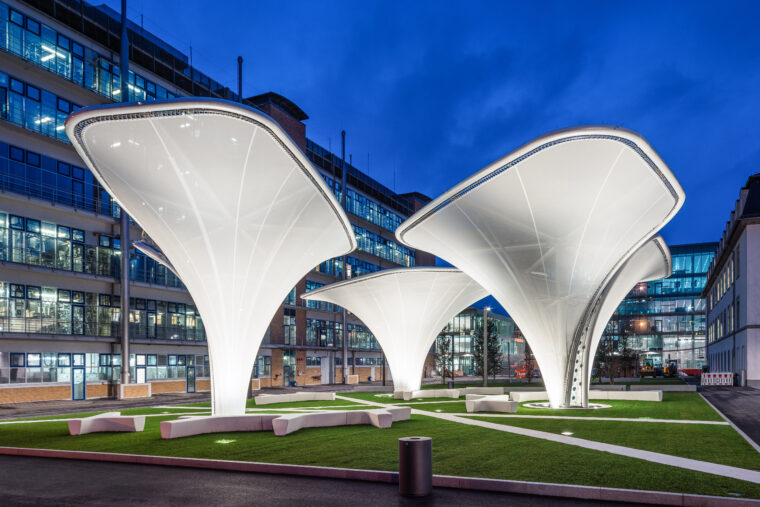Apr 2018 - Darmstadt, Germany
OPV Solar Trees of the German Pavilion at EXPO 2015 obtain sustainable use
CLIENT
Merck KGaA
FEATURES
Number of installed modules: 1,000 small and 250 large OPV modules
Total occupied surface: ≈ 120 m2
Application type: system of flexible, hexagonal OPV modules, fitted into a honeycomb steel mesh attached to the structure
Electrical system: self-consumption
